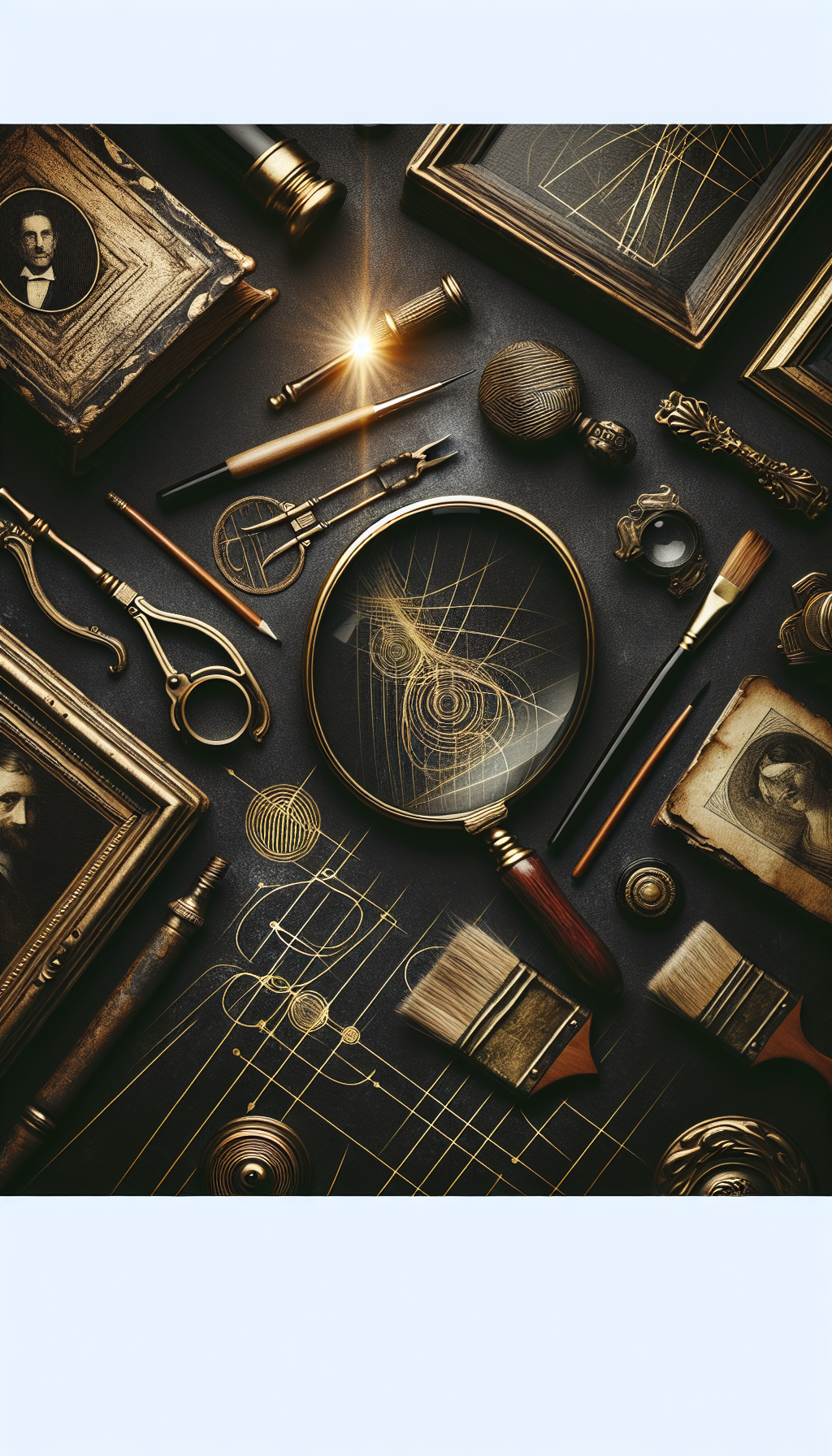An Original Watercolor Painting By Listed Artist Ruth Bulloch
If you’re holding or considering a purchase of an original watercolor by listed artist Ruth Bulloch, you’re in a niche that rewards careful looking. Watercolors can be technically subtle, condition-sensitive, and market-specific. This guide lays out a practical, methodical approach to confirming what you have, understanding how it was made, assessing condition, situating it in the market, and caring for it long-term.
What “Listed Artist” Means and How to Verify It
“Listed artist” typically indicates that the artist’s name appears in established reference sources, such as recognized artist dictionaries, auction records, and exhibition catalogues. It is a marketing shorthand, not a guarantee of value or authenticity. Verification is critical.
How to verify “listed” status:
- Check standard artist reference works appropriate to geography and era (e.g., widely used artist dictionaries and “Who’s Who”-style compendiums).
- Search reputable auction databases for recorded sales. Focus on sold results rather than asking prices and narrow to the correct medium (watercolor on paper).
- Look for museum or institutional mentions, exhibition checklists, or catalogues that cite the artist.
- Confirm biographical details (dates, locations, training) across multiple sources for consistency.
- Note the medium and subject matter appearing in records. If references mostly show oils or prints, but your work is a watercolor, that’s not disqualifying—but it warrants closer scrutiny.
Red flags:
- Vague claims like “listed in many references” with no specifics.
- Records that show a different signature style or inconsistent biographical dates.
- Only dealer listings with no independent references.
Confirming listed status helps anchor your research, but a specific watercolor’s value hinges far more on originality, quality, condition, and market comparables.
Authenticating the Work: Original Watercolor vs. Print
Watercolors are among the most frequently misidentified mediums, especially when a high-quality reproduction is framed behind glass. Before you consider value, determine whether your piece is an original watercolor by Ruth Bulloch or a print of one.
Practical tests and observations:
- Under magnification: Originals show brushwork, granulation, and irregular pigment edges. A giclée (inkjet) shows fine spray patterns; an offset lithograph reveals rosette or dot patterns.
- Surface sheen: Watercolors may show varied sheen from gum arabic or areas of heavier wash; prints usually have a uniform surface unless textured paper is mimicking brushwork.
- Paper cockling: True watercolor often causes slight rippling where washes pooled; prints on flat-mounted paper remain uniformly planar.
- Pigment pooling and tide lines: Look for overlapping washes and the darker edges where water dried—difficult to reproduce convincingly in prints.
- Underdrawing: A faint graphite or charcoal sketch might be visible beneath a watercolor. Prints can reproduce this, but the line in originals often varies in pressure and can be seen crossing under transparent washes.
- Verso inspection: If safe to do so, examine the back (without dismantling the frame yourself if there’s risk). Original watercolor can show a hint of pigment migration or uneven toning where heavy washes were applied; prints generally will not.
- Signature integration: In original works, the signature’s medium typically matches the watercolor or pencil used elsewhere and sits organically within the composition. Watch for signatures that appear mechanically regular, sit atop a print layer, or use a medium inconsistent with the rest of the piece.
- Edition marks: A fraction such as 12/100 suggests a print. Annotations like “watercolor” or “w/c” may appear, but these are easy to add post hoc. Cross-check against known practices for the artist.
If uncertainty remains, a qualified paper conservator or an experienced appraiser can confirm medium with safe, non-invasive examination.
Reading the Object: Materials, Technique, and Condition
Once you’ve established originality, study the work itself. Materials and technique influence both scholarly interest and longevity; condition directly affects value.
Paper and support:
- Type: Laid papers show chain and laid lines; wove papers are more uniform. Higher-quality rag papers age better than wood-pulp papers with lignin.
- Watermarks: Hold to safe, diffused transmitted light to find a watermark; this can help date and source the paper.
- Deckle edges: Genuine deckle edges can indicate sheet size and that the work has not been significantly trimmed.
Technique:
- Washes and glazing: Look for transparent layers (glazes) that build color depth. Effective glazing without muddiness suggests control and experience.
- Drybrush and lifting: Crisp drybrush textures and intentional lifting (removing pigment to reveal highlights) are signs of confident handling.
- Color choices: Some historical pigments are fugitive (e.g., early alizarin crimson, rose madder, aureolin). Fading of reds or purples compared with protected areas under a mat can indicate light sensitivity history.
- Composition: Balanced negative space, focal hierarchy, and clean edges around reserved highlights are hallmarks of strong watercolor design.
Condition issues to note:
- Light fading: Compare tones hidden under the mat window to exposed areas. UV exposure can desaturate and shift hues.
- Mat burn: A brown line paralleling the mat window indicates acid migration from an old mat. This is common and affects value.
- Foxing: Rust-colored spots caused by mold or metal impurities. Severity matters; professional treatment may be possible.
- Stains and tidelines: Water damage leaves characteristic rings; reducing them requires specialized conservation.
- Abrasion and losses: Scratches, skinning of paper fibers, or rubbed areas diminish value and are difficult to disguise in watercolor.
- Tape and adhesives: Pressure-sensitive tapes can stain; hinges should ideally be Japanese paper with wheat starch paste.
- Insect damage and tears: Note any nicks, tears, or repaired breaks; check if repairs are archival.
Framing and presentation:
- Glazing: UV-filtering glazing is preferable for watercolors. Non-glare glass can obscure detail if low quality; museum glass combines UV filtration and clarity.
- Spacers and mats: Artwork should not touch the glass. Use acid-free, 100% cotton rag or alpha-cellulose mats and backing.
- Mounting: No dry-mounting. Hinge with reversible, archival methods. Dry-mounting is a major condition and value detractor for works on paper.
Document all observations with clear photographs, including the verso, frame label details, and any inscriptions.
Establishing Provenance and Context
Provenance is the documented ownership history and can be as important as the work itself.
Where to look:
- Verso: Labels from galleries, exhibitions, framers, and auction houses; handwritten titles or inventory numbers.
- Paper trail: Invoices, correspondence, exhibition checklists, or photographs of the work in situ. Even a dated framer’s receipt helps anchor a timeline.
- Artist’s inscriptions: Dedications, dates, or place names can link the piece to specific periods or exhibitions.
Evaluating provenance:
- Continuity: A chain from artist to present owner, with few gaps, is ideal. Gaps aren’t fatal but merit cautious valuation.
- Independent corroboration: Cross-reference names on labels with published exhibition lists or known gallery partnerships for the artist.
- Regional context: Many artists have strong regional markets. A Ruth Bulloch watercolor with exhibition history in a particular region may price differently within that locale.
Provenance can add value, support authenticity, and expedite insurance or donation appraisals.
Appraisal and Market Value: Using Comparables the Right Way
Watercolor markets are sensitive to medium, size, subject, and condition. To estimate fair market value, build a comparables set deliberately.
Steps for comparables:
- Match the medium: Compare only Ruth Bulloch watercolors with other Ruth Bulloch watercolors, not oils or prints.
- Align size and format: Larger, exhibition-scale sheets often command more; small sketches price lower.
- Adjust for subject: Market demand varies by subject (e.g., recognizable landmarks vs. generic scenery; figure studies vs. florals). Identify patterns in past sales.
- Date and period: Works from an artist’s mature period or “signature” phase can outperform early or late pieces.
- Condition adjustments: Deduct for mat burn, foxing, fading, tears, or non-archival mounting. Note whether issues are reversible by a conservator and what risks remain.
- Signature and inscriptions: A clear, period-consistent signature is typical for finished watercolors. Unsigned works can still be authentic but may carry a discount unless accompanied by strong provenance.
- Sale channel: Compare like-to-like (auction hammer prices vs. retail gallery prices). Remember buyer’s and seller’s fees when weighing net proceeds.
When to engage a professional:
- For insurance, estate, donation, or equitable distribution, seek a USPAP-compliant appraisal from a qualified appraiser specializing in fine art on paper.
- If seven-figure or complex provenance claims are involved, add legal and conservation expertise.
Selling options:
- Auction: Transparent pricing, broader reach, variable timing. Factor in commissions and photography/illustration fees.
- Dealer or gallery consignment: Curated audience, possibly higher retail pricing, longer timelines, and consignment rates to consider.
- Private sale: Confidential, potentially efficient, but dependent on your network and negotiation skill.
Avoid over-relying on asking prices. The most reliable indicator is what comparable works actually sold for, after condition and context adjustments.
Care, Conservation, and Presentation
Preservation best practices both protect value and demonstrate stewardship to future buyers.
Display:
- Light: Limit exposure to 50 lux for works on paper, ideally with UV-filtering glazing. Avoid direct sunlight and strong LED spots.
- Environment: Stable temperature and relative humidity (around 40–55% RH). Avoid walls with exterior temperature swings or near radiators and vents.
- Placement: Keep away from kitchens, bathrooms, and fireplaces where airborne contaminants and moisture accumulate.
Storage:
- Materials: Use archival, acid-free folders, interleaving with unbuffered tissue if pigments are sensitive, and rigid boxes.
- Orientation: Store flat when unframed; if framed, store upright with stiff backing, protected corners, and no pressure on the glazing.
Interventions:
- Cleaning and repairs: Do not attempt to remove foxing, surface grime, or stains at home. Solvents and moisture can irreversibly damage watercolor.
- Reframing: If the mat is acidic or glazing lacks UV filtration, invest in conservation-grade reframing. Keep any original labels; move them to the new backing or preserve with photos.
Documentation:
- Keep a condition report, provenance documents, and high-resolution images. Update after any conservation treatment or reframing.
Practical Checklist: Ruth Bulloch Watercolor
- Confirm medium: original watercolor (not print) via magnification, surface, and paper cues.
- Verify “listed” status and build a brief artist file with references and any recorded sales.
- Record measurements: image size, sheet size, and framed dimensions.
- Photograph recto, verso, signature, labels, and any inscriptions.
- Assess condition: fading, mat burn, foxing, stains, tears, mounting method.
- Note materials: paper type, watermarks, deckle edges, glazing and mat quality.
- Gather provenance: invoices, labels, correspondence, exhibition history.
- Compile comparables: same artist, medium, size, subject, condition, and sale channel.
- Decide on conservation and reframing needs before marketing or insuring.
- If needed, engage a qualified, USPAP-compliant appraiser.
FAQ
Q: What does “listed artist” actually guarantee? A: It indicates the artist appears in recognized references or auction records, which supports market presence. It does not guarantee authenticity of your piece or a specific value. You still need to verify medium, signature, provenance, and condition.
Q: How can I be sure my Ruth Bulloch watercolor isn’t a giclée? A: Use a 10x loupe to look for inkjet spray or offset dots; originals show brush edges, granulation, and varied wash densities. Check for paper cockling from wet application and tide lines. When in doubt, consult a paper conservator or appraiser.
Q: Should I reframe before selling? A: If the current frame has acidic mats, no UV protection, or is visibly damaged, conservation reframing can protect the work and improve buyer confidence. Preserve and photograph any original labels and inscriptions during reframing.
Q: Can faded watercolor colors be restored? A: Light-faded pigments generally cannot be restored to original saturation. A conservator may reduce stains or mat burn and stabilize the sheet, but color loss from UV exposure is typically permanent.
Q: Do I need a formal appraisal? A: For insurance, estate, donation, or legal purposes, yes—seek a USPAP-compliant appraisal from a specialist in works on paper. For general selling decisions, thorough comparables research may suffice, but a formal appraisal adds credibility and documentation.
By approaching an original watercolor by listed artist Ruth Bulloch with disciplined observation, careful documentation, and appropriate professional help where needed, you will be well-positioned to authenticate, preserve, and accurately value the work.



